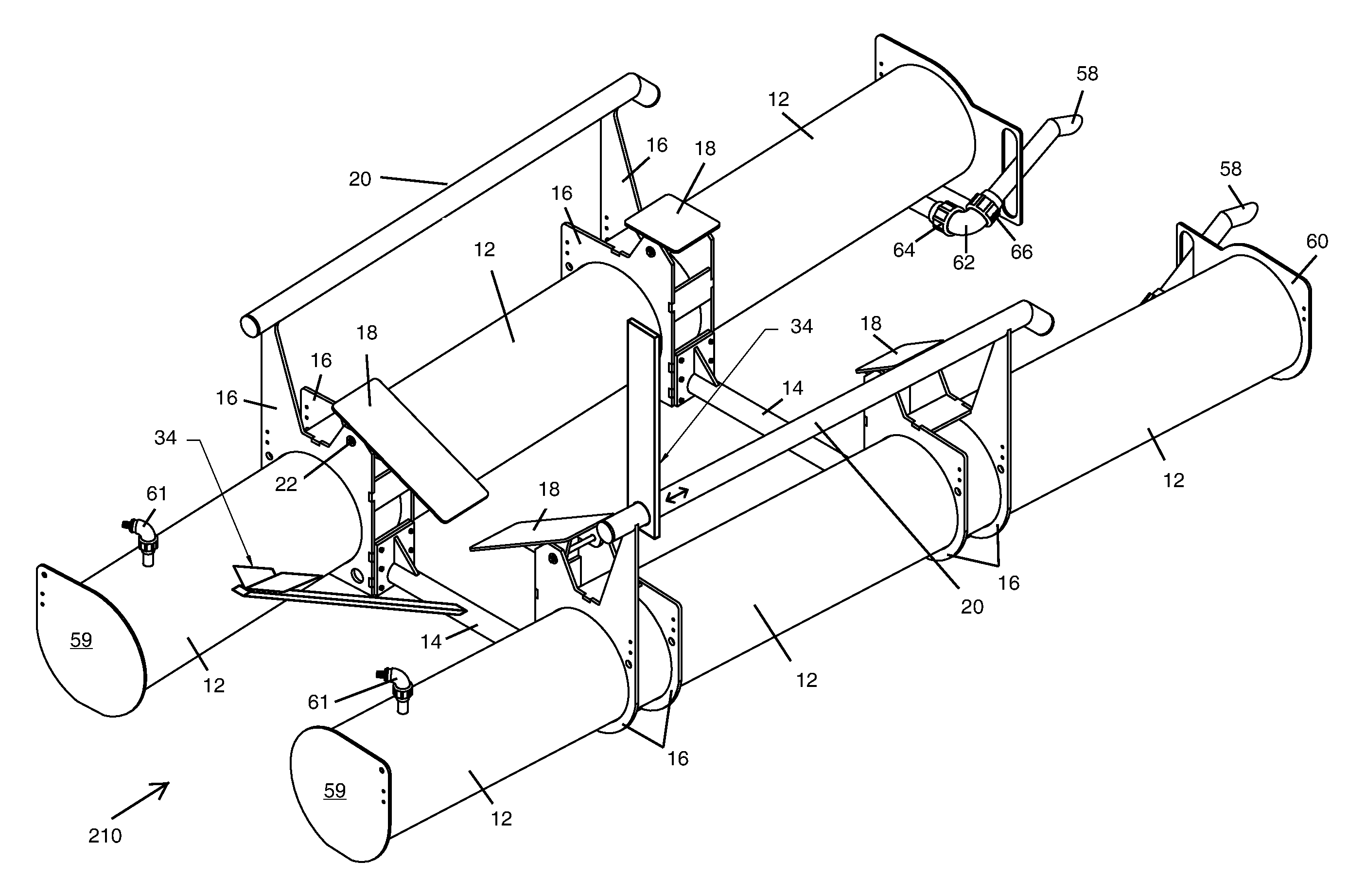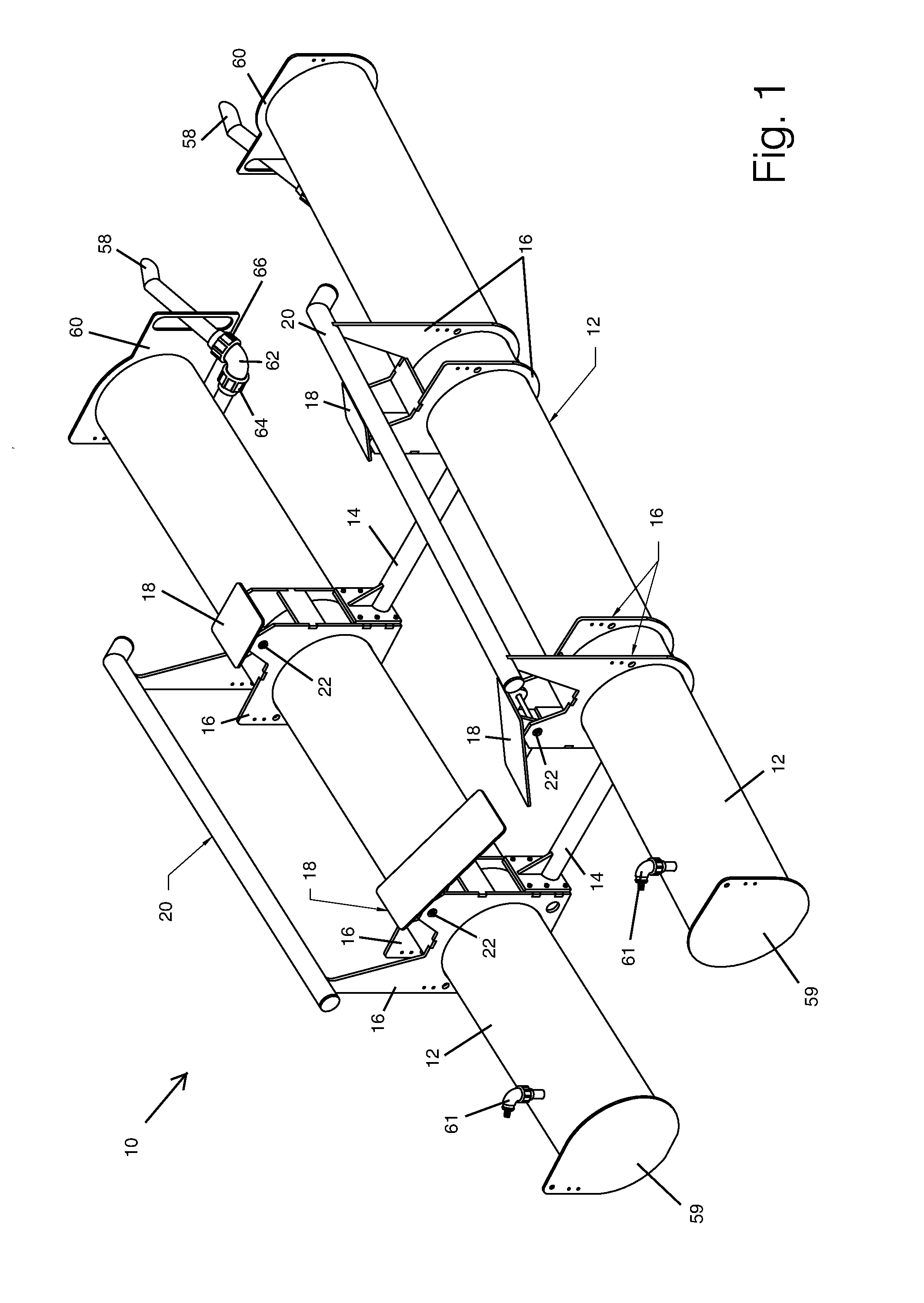Elevated dock
a safe and stable technology, applied in the field of boat storage, can solve the problems of high maintenance cost, harmful effects, and high cost of boats, and achieve the effect of safely lifting the boat out of the water
- Summary
- Abstract
- Description
- Claims
- Application Information
AI Technical Summary
Benefits of technology
Problems solved by technology
Method used
Image
Examples
Embodiment Construction
[0061]FIGS. 1-6 show a basic preferred embodiment of the elevated dock 10 of the present invention. The elevated dock 10 has pontoons 12 disposed non-parallel to each other and held spaced apart by lateral struts 14 (which may or may not be length adjustable). As shown in FIG. 5, lateral struts 14 have strut slots 15 to facilitate the length-adjustability of the lateral struts 14. Of course, the length-adjustability of the lateral struts 14 can be accomplished in any of a number of ways know to those skilled in the art, including but not limited to, pin-and-slot adjustment and telescoping adjustment.
[0062]About each pontoon 12 are flat plate gussets 16 that maintain the transverse circular integrity of the pontoons and serve as mounting support for the angled support plates 18 and the longitudinal bumper 20. Flat front gussets 59 and flat rear gussets 60 serve to seal the ends of each pontoon 12 The flat plate gussets 16 may have simple holes or cleats that eliminate the need for cl...
PUM
 Login to View More
Login to View More Abstract
Description
Claims
Application Information
 Login to View More
Login to View More - R&D
- Intellectual Property
- Life Sciences
- Materials
- Tech Scout
- Unparalleled Data Quality
- Higher Quality Content
- 60% Fewer Hallucinations
Browse by: Latest US Patents, China's latest patents, Technical Efficacy Thesaurus, Application Domain, Technology Topic, Popular Technical Reports.
© 2025 PatSnap. All rights reserved.Legal|Privacy policy|Modern Slavery Act Transparency Statement|Sitemap|About US| Contact US: help@patsnap.com



